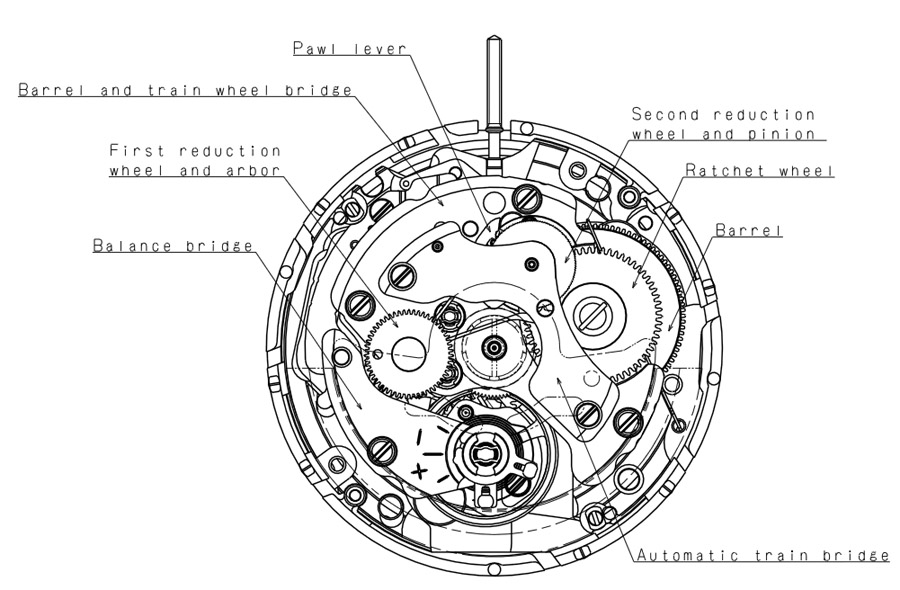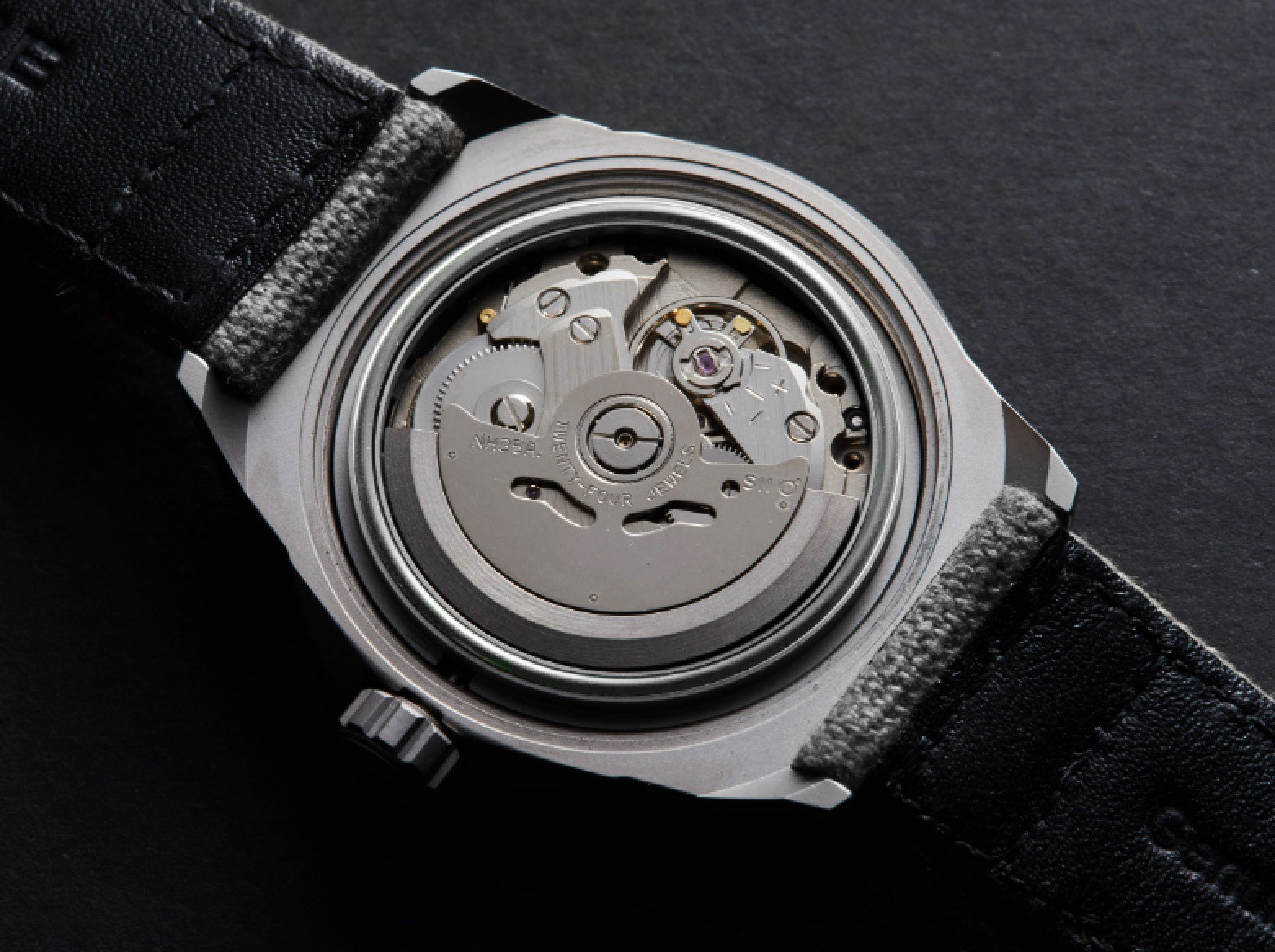When buying a hardy timepiece that’s ready to rough it out with you, one of the most essential features to look out for are maximum accuracy and reliability, which boils down to the movement of the watch. The movement is the beating heart of the watch, determining the watch's long-term durability and stability.
Here at RZE, we have always placed utmost importance on excellent craftsmanship and high quality parts while still being friendly on the wallet; which is why we have chosen the Seiko NH35, NH38 and VK64, three well-known Japanese Seiko movements that are essentially identical to movement used in famous Seiko watches such as the Seiko Samurai/Mini-Turtle (4R35).
What is a watch movement?
The movement of a watch is considered the most important part of a watch. A watch movement is the mechanism that makes your watch tick. Without the movement, the watch cannot tell time. Just like how a car requires an engine to power up and get going.
What is a Japanese movement?
Watches with Japanese movements have mechanical movements, automatic movements or quartz movements that are manufactured in Japan. Though many watches are famous for having Swiss movements, Japanese movements continue improving in quality, and are now on-par with watches with Swiss movements, and on many occasions have even surpassed Swiss movements in terms of reliability.
|
Manufacturer |
Seiko |
|
Caliber Numbers |
NH35 and NH38 (or NH35A and NH38A) |
|
Movement Type |
Automatic |
|
Jewels |
24 |
|
Power Reserve |
More than 41 hours |
|
Accuracy |
20 ~ +40 seconds per day (23º± 2ºC) |
Source: NH35 and NH38 Spec Sheets from the Time Module [https://www.timemodule.com/en/ourProduct/2&Basic-Mechanical-Movement-(NH)]

Source: https://calibercorner.com/seiko-caliber-nh35a/
What’s the difference between a Swiss movement and a Japanese movement?
Swiss and Japanese movements differ primarily in that Swiss movements focus on the aesthetics of craftsmanship, whilst Japanese movements are made with precision and accuracy in mind. Both are used to power a wide range of timepieces and are utilised by a large number of watchmakers across the world.
In terms of accuracy and precision, the mechanism is on par with Swiss models. Furthermore, Japanese automatic movements are generally more affordable without sacrificing functionality or performance.
It's worth noting that Seiko isn't the only Japanese company that makes automatic watches (since Seiko has a number of movement models). Citizen's Miyota is another option. Both manufacturers are well-known for their dependability and can be considered when searching for a low-cost, high-quality movement.
Japanese movements are made in a slightly different way, primarily on an automated robotics line. This allows for a far lower degree of inaccuracy as compared to movements crafted with sight alone. The whole Japanese approach revolves around efficiency and functionality. These watches are built with precision and effectiveness at the forefront, with aesthetics as a secondary thought.
While most Japanese movements don’t possess very intricate cosmetic detailing, the slightly more "raw" aspect of the pure mechanical pieces appeals to a lot of individuals. Because of the nature of the assembly, Japanese movements are frequently less expensive than Swiss movements, although this does not imply a lower level of quality.
Which is better: Swiss or Japanese movement?
Japanese movements are considered very practical, with more emphasis on precision and a cost-effective build, and less on looks. These movements are created on automated assembly lines, which helps keep costs down for manufacturers.
On the other hand, Swiss movements are the original automatic movements, and they set the standard for both precision and quality. Swiss movements must adhere to certain laws that ensure excellence and accuracy, and are also most often hand-assembled — a detail which usually impacts the overall quality and price of the watch.
Choice of movement will largely depend on your particular priorities and budget, but here at RZE, we believe we have struck a balance between affordability and quality with Japanese movements.
Conclusion: Swiss vs. Japanese movement

At the end of the day, both work well and are widely used by watchmakers around the world. RZE designs watches with unique Japanese movements that are both high-quality and sturdy enough to take you through all your adventures. RZE has three collections that use Seiko movements – the Resolute, Endeavour and Valour.
The Resolute features a selection of field titanium watches using the Seiko Japan NH35 while the Endeavour is our titanium dive collection using the NH38 for the no-date model, and the NH35 for the date model.
On the other hand, the Valour features our first ever mecaquartz collection using the VK64.
To sum up, RZE watches are powered by Japanese movements for its comparable accuracy and precision with Swiss movements at a great price point.





